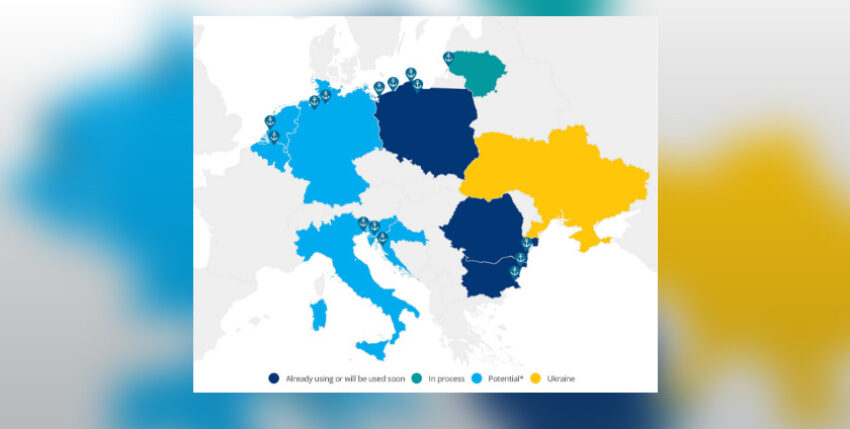An online article in the EU magazine euractiv takes a look at the faltering Ukrainian grain exports and underpins it with very catchy graphics.
Before the Russian invasion of Ukraine, the country exported 4 to 5 million tonnes of grain per month primarily to the countries Africa and the Middle East. 90 % of this trade passed through the harbours of the Black Sea.
EU "Solidarity Lanes" initiative
With the blockade of the Ukrainian coast and access to ports on the internal waterways, new land routes via neighbouring European countries must be established before these foodstuffs can be shipped by sea to the countries of destination. The process of finding alternative routes is supported by the "Solidarity Lanes" initiative of the European Commissionso that all possibilities are analysed across all countries.
Routes found so far mainly run through Poland and Bulgaria to the nearest seaports. However, the ports of Italy, Slovenia, Croatia and Belgium/Netherlands on the northern side can also be reached by lorry and rail.
Difficult solutions
However, freight transport by lorry is more suitable for short distances. Mass freight transport by rail has the considerable disadvantage that it has to be reloaded from the Russian broad gauge to the European standard gauge - apart from obstructive customs procedures and the limited availability of appropriate rolling stock, which was only needed to a limited extent before the war.
Before the sanctions, Ukraine had exported large quantities of potash (potassium carbonate/potash) to Lithuania by rail via Belarus. This route would be perfectly usable if the EU's well-tied sanctions packages were not in the way.
Only the sea route remains for bulk goods
However, the bulk of the 22 million tonnes of grain in Ukraine's warehouses - plus the 2022 harvest - can essentially only be transported via Ukrainian ports. Quick solutions are needed here!
Link to the article:
Source: euractiv










